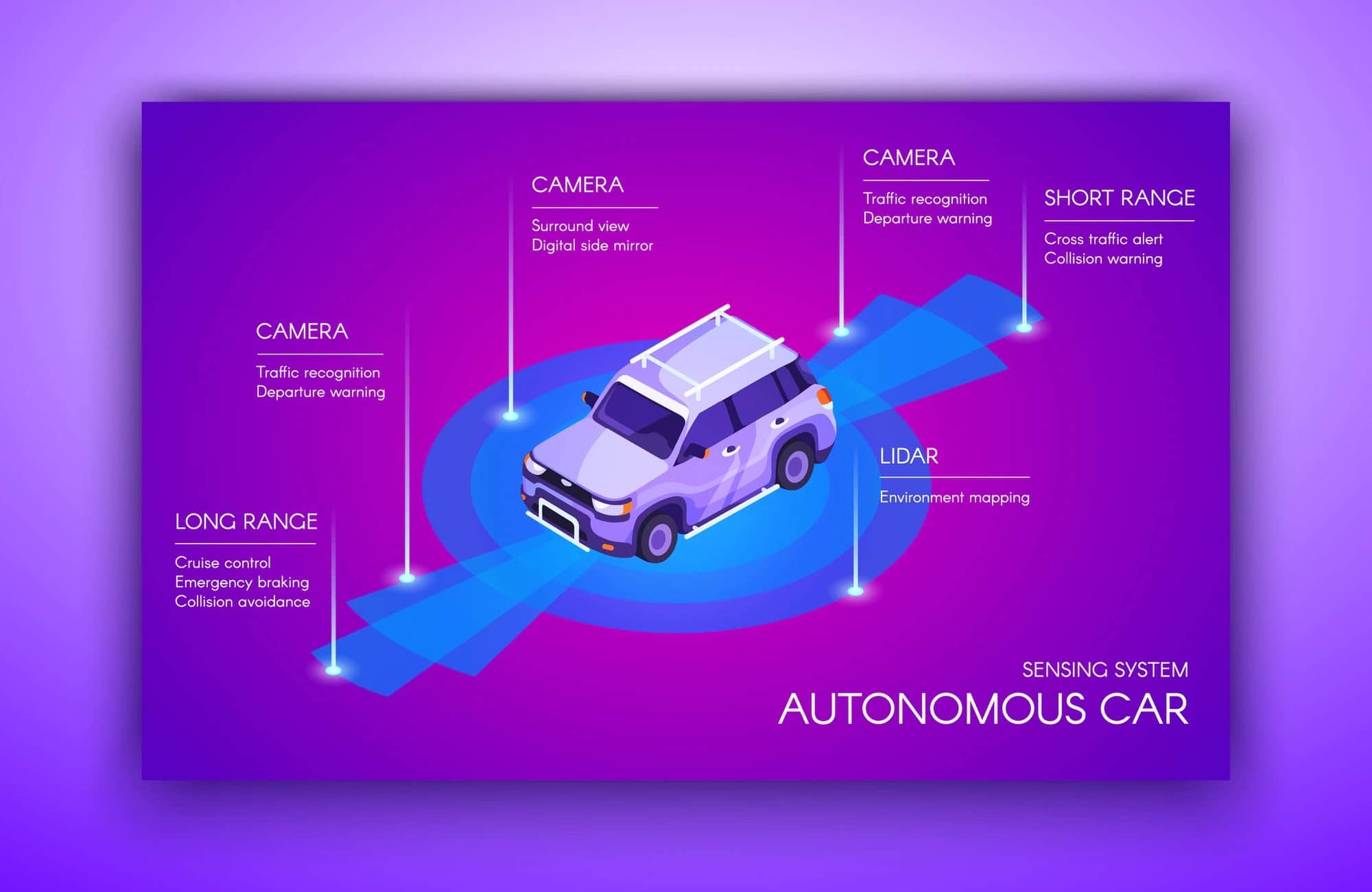
We can only begin to imagine the possibilities Artificial Intelligence holds, but one of the most well-known topics related to AI potential is that of autonomous driving. The concept of machines that mimic human cognition – Artificial Intelligence, or AI for short – dates back as early as ancient Greece, though the term wasn’t coined and developed into a field until 1956. In recent years the technology has rapidly progressed and its uses have broadened significantly to include areas like agriculture, medicine, voice assistance, and even autonomous driving.
Also Read: What are smart cities?
The convergence of AI and autonomous vehicles is a big step for both the automobile industry and the AI industry. We can only begin to imagine the possibilities Artificial Intelligence holds, but one of the most well-known topics related to AI potential is that of autonomous driving. In recent years, major progress has been made by companies like Tesla, Waymo, and Alibaba towards the creation of fully autonomous vehicles powered by AI.
Source: YouTube
In this article, we will take a closer look at the use of AI in vehicles – from its role in infrastructure, to the algorithms that are equipping AI to take to the roads.
What are Autonomous Cars?
Autonomous cars are vehicles capable of performing the same actions as those driven by experienced humans without any physical input from humans. They can interpret obstacles and signs to move safely on their own. They listen for instructions and with the help of their sensors, machine learning systems, actuators, and complex algorithms, they carry out the command.
Also Watch: A drone that can dodge anything thrown at it.
AI and Autonomous Driving
Artificial Intelligence has been the single biggest force of breakthroughs in the creation of autonomous cars. The first autonomous cars were unveiled in the 1980s, however, levels 4 and 5 of autonomous cars — which are fully autonomous — were made possible by AI.
To achieve autonomous driving, AI needs to plan and execute actions without the influence of a human driver. The AI is equipped to perform the same functions as a human driver. It has recognition and decision-making abilities, sensory functions, and the ability to model data with deep learning algorithms. Armed with these innovations, the AI-powered vehicle can perform autonomously.
Also Read: AI and Power Grids.
Role of AI in Building Infrastructure for Autonomous Vehicles
For a car to be completely autonomous, it needs to have a camera to enable vision, be equipped with a communication system, and have sensors. These features are to enable the car to generate data with which it can function. The role of AI in creating this infrastructure for autonomous vehicles is to make those features exhibit the characteristics of a human driver. AI enables it to see, hear, think, and make decisions by itself using the data that has been gathered by using the components fitted in the vehicle.
Source: YouTube
The Importance of GDDR6 to the Future of Autonomous Driving
GDDR6 memory is known for its higher bandwidth and speed than its predecessors. Its bandwidth is what runs the computer engine of AI systems, which are at the heart of the advancement of autonomous vehicles.
GDDR6 is also known for its ability to withstand the harsh conditions that vehicles on the road typically encounter. GDDR6 memory technology will certainly be playing an important role in the advancement of autonomous cars.
Also Read: Inside Arrival’s Futuristic Factory
How Autonomous Cars Generate their Data
Artificial Intelligence used in autonomous vehicles will need to be able to “see” its surroundings, and this is accomplished using cameras, RADAR, and LIDAR. With the help of these sensors and cameras, installed in different parts of the car, the AI draws information from which to make decisions. Below are individual parts of the system and the role they play in data collection for autonomous cars.
Sensors
The sensors monitor the position of your car and how close they are to other vehicles, pedestrians, and objects on the road. The two sensors used by autonomous vehicles are the Light Imaging Detection and Ranging (LIDAR sensor) and the Radio Detection and Ranging (RADAR sensor).
The LIDAR sensor measures distances and identifies components of the road such as road marking and curbs by bouncing pulses of laser light off the car’s surroundings.
Source: YouTube
SIFT (Scale-Invariant Feature Transform) for Feature Extraction
This algorithm is a feature detection algorithm used to detect, describe, and match key points in a partially visible image/object. These key points are then used to identify the image/object in question.
AdaBoost for Data Classification
The AdaBoost algorithm is used both as a regression algorithm and as a classification algorithm, but the focus in this context will be on AdaBoost as a classification algorithm. When in use for data classification, it collects and classifies data to support the vehicle’s AI learning process. AdaBoost improves the AI’s decision-making abilities by grouping low-performing classifier data to get high-performing data.
Also Read: AI to Pick Stocks
TextonBoost for Object Recognition
The TextonBoost algorithm is similar in performance to the AdaBoost algorithm in that it combines low-performing classifiers to get one high-performing classifier. The major difference between TextonBoost and AdaBoost is in the fact that the former can interpret data related to appearance, context, and shape. By combining these three classifiers, the TextonBoost algorithm can more accurately recognize images and objects.



